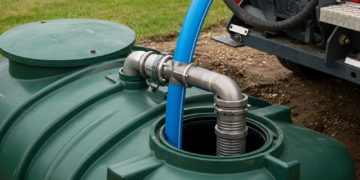Stormwater management has become a cornerstone of resilient community planning, especially as urban development expands and weather patterns grow more unpredictable. Applying Stormwater Management Strategies that consider floodplain behavior, watershed dynamics, and regulatory standards allows engineers, planners, and municipalities to reduce flood risk, maintain water quality, and protect infrastructure. Equally important are floodplain analysis techniques that combine mapping, modeling, and mitigation tools to evaluate how stormwater interacts with land features and built environments. Together, these approaches strengthen both environmental integrity and public safety while supporting sustainable growth in areas such as Real Estate Development and city infrastructure improvement.
Introduction to Stormwater Management and Floodplain Dynamics
Stormwater management addresses how rainwater and snowmelt are collected, conveyed, treated, and released into natural systems. Without proper planning, uncontrolled stormwater contributes to flooding, erosion, water pollution, and structural damage. Floodplains, low-lying areas adjacent to rivers or streams that store excess water during storm events, play a critical role in managing floodwater. These natural buffers reduce flow velocity, allow groundwater recharge, and provide ecological habitat.
Understanding the relationship between stormwater systems and floodplain dynamics is essential. Floodplains act as overflow zones, enabling rivers to respond naturally to runoff surges. Therefore, modern planning integrates stormwater control with floodplain preservation, limiting development in sensitive areas while using these zones as part of comprehensive risk reduction.
Understanding Watershed Hydrology and Runoff Behavior
A watershed is a region where all precipitation drains to a common outlet, such as a river or lake. Its characteristics, topography, soil composition, vegetation, and land use, directly influence runoff behavior. Hydrologists analyze how rainfall transforms into surface flow, infiltration, or evaporation. Key factors include:
- Impervious surfaces: Roads, buildings, and parking lots hinder infiltration and increase runoff volume.
- Soil permeability: Sandy soils absorb water quickly, whereas clay soils generate higher runoff.
- Vegetation cover: Trees and plants intercept rain, slow runoff, and promote infiltration.
Effective Stormwater Management Strategies assess these variables to predict peak flows, design drainage systems, and evaluate flood hazards. As urban areas grow, natural hydrologic functions diminish, requiring engineered solutions that mimic natural absorption and detention processes.
Regulatory Framework: Policies Governing Stormwater and Floodplains
Stormwater management and floodplain use are regulated at local, state, and federal levels. Policies focus on flood risk reduction, environmental preservation, and water quality improvement. Common regulatory elements include:
- National Pollutant Discharge Elimination System (NPDES): Controls stormwater pollutant discharge.
- Floodplain zoning ordinances: Restrict construction in high-risk areas.
- Wetland preservation guidelines: Protect critical natural water storage systems.
- Stormwater retention requirements: Mandate onsite water control for new developments.
Compliance with these standards ensures safety and sustainability. Municipalities often consult specialized experts, such as engineering firms in Nashville, who navigate permitting, hydrologic analysis, and infrastructure design to meet regional requirements.
Green Infrastructure Solutions for Sustainable Stormwater Control
Green infrastructure incorporates natural processes into engineered systems to manage runoff sustainably. These solutions reduce the burden on conventional stormwater networks while enhancing urban ecosystems. Common methods include:
- Rain gardens and bioswales: Capture and filter runoff through soil and vegetation.
- Green roofs: Absorb rainfall, reduce heat islands, and slow discharge rates.
- Permeable pavements: Allow water to infiltrate through specially designed surfaces.
- Constructed wetlands: Provide large-scale treatment and flood storage capabilities.
These systems help restore hydrologic balance, improve water quality, and reduce flood risk. They align perfectly with modern Stormwater Management Strategies by prioritizing resilience, environmental function, and long-term cost savings.
Traditional vs. Modern Stormwater Drainage Systems
Traditional drainage systems emphasize rapid conveyance through gutters, pipes, and channels, moving water away from developed areas as quickly as possible. While effective in preventing localized flooding, this approach increases peak flows downstream, contributes to erosion, and elevates pollutant loads in receiving waters.
In contrast, modern systems integrate detention, retention, infiltration, and green infrastructure. Instead of simply transporting stormwater, they slow flows, treat pollutants, and support groundwater recharge. Key distinctions include:
| Traditional Systems | Modern Systems |
| Focus on speed and conveyance | Emphasize infiltration and storage |
| Minimal water quality treatment | Filtration through soils and vegetation |
| Increased downstream flooding | Reduced peak flow impacts |
| Costly long-term maintenance | Lower operational costs when integrated with nature |
Floodplain Mapping: Tools, Technologies, and Best Practices
Accurate floodplain mapping is fundamental for land-use planning and risk mitigation. Technologies and tools used today include:
- LiDAR (Light Detection and Ranging): Provides precise elevation data for modeling flood extents.
- GIS applications: Integrate environmental data for spatial analysis and decision-making.
- Satellite imagery and drone surveys: Offer real-time landscape monitoring.
- FEMA flood maps: Identify regulatory flood zones and insurance requirements.
Best practices stress continuous updates based on land-use change, climate impacts, and evolving hydrologic data. Mapping should not only inform regulations but also educate the public on risk awareness and emergency preparedness.
Hydrologic and Hydraulic Modeling for Flood Risk Assessment
Flood risk assessment requires both hydrologic and hydraulic modeling:
- Hydrologic models simulate rainfall-runoff processes within watersheds.
- Hydraulic models analyze water movement through channels, floodplains, and infrastructure.
Software such as HEC-RAS, HEC-HMS, SWMM, and MIKE FLOOD allow engineers to predict flood depths, flow velocities, and inundation boundaries. These tools support engineering design, emergency planning, and climate adaptation. Modeling scenarios help planners evaluate future development impacts and identify vulnerabilities before they lead to costly damage.
Mitigation Techniques for Flood-Prone Areas
Mitigation reduces flood consequences through structural and non-structural strategies:
Structural Measures:
- Levees, floodwalls, and embankments
- Detention basins and upstream reservoirs
- Channel improvements and culvert upgrades
Non-Structural Measures:
- Floodplain zoning and relocation incentives
- Flood warning systems and emergency plans
- Wetland restoration and shoreline buffers
Successful mitigation blends both strategies, ensuring that protective infrastructure is complemented by environmental conservation and community readiness.
Design Considerations for Stormwater Systems in Urban Environments
Urban environments pose unique challenges due to dense development, limited space, and high runoff production. Important design considerations include:
- Land use constraints: Systems must adapt to confined spaces like rooftops, parking lots, and roadside medians.
- Peak flow management: Infrastructure must handle intense rainfall events without overwhelming systems.
- Pollution control: Filtration devices and vegetative systems must remove contaminants.
- Public safety: Flood pathways must avoid flow through streets, underground spaces, or near utilities.
- Aesthetic integration: Green infrastructure should complement urban landscape design.
Designers must balance functionality, cost, and environmental benefits while anticipating future development and population changes.
Climate Change Impacts on Stormwater and Floodplain Planning
Climate change increases rainfall intensity, frequency of extreme storms, sea level rise, and prolonged droughts, all affecting stormwater and floodplain management. Anticipated impacts include:
- Higher peak flows requiring larger detention and conveyance systems
- Expanded floodplain boundaries due to rising river levels
- Increased sediment loads affecting water quality
- Stress on aging infrastructure unprepared for future conditions
To adapt, planners must incorporate climate projections into models, increase system capacity, promote green infrastructure, and safeguard floodplains as natural buffers. Resilient Stormwater Management Strategies must be flexible, scalable, and environmentally conscious to withstand climate uncertainty.
Conclusion: Stormwater management and floodplain analysis
Stormwater management and floodplain analysis are vital elements of sustainable, safe, and resilient community development. By understanding watershed hydrology, adhering to regulatory frameworks, utilizing modern modeling tools, and embracing green infrastructure, engineers and planners can design systems that reduce flood risk, protect the environment, and support future growth. As communities expand, integrating natural systems with advanced engineering will remain critical to managing stormwater effectively and preserving the integrity of floodplains for generations to come.











































































